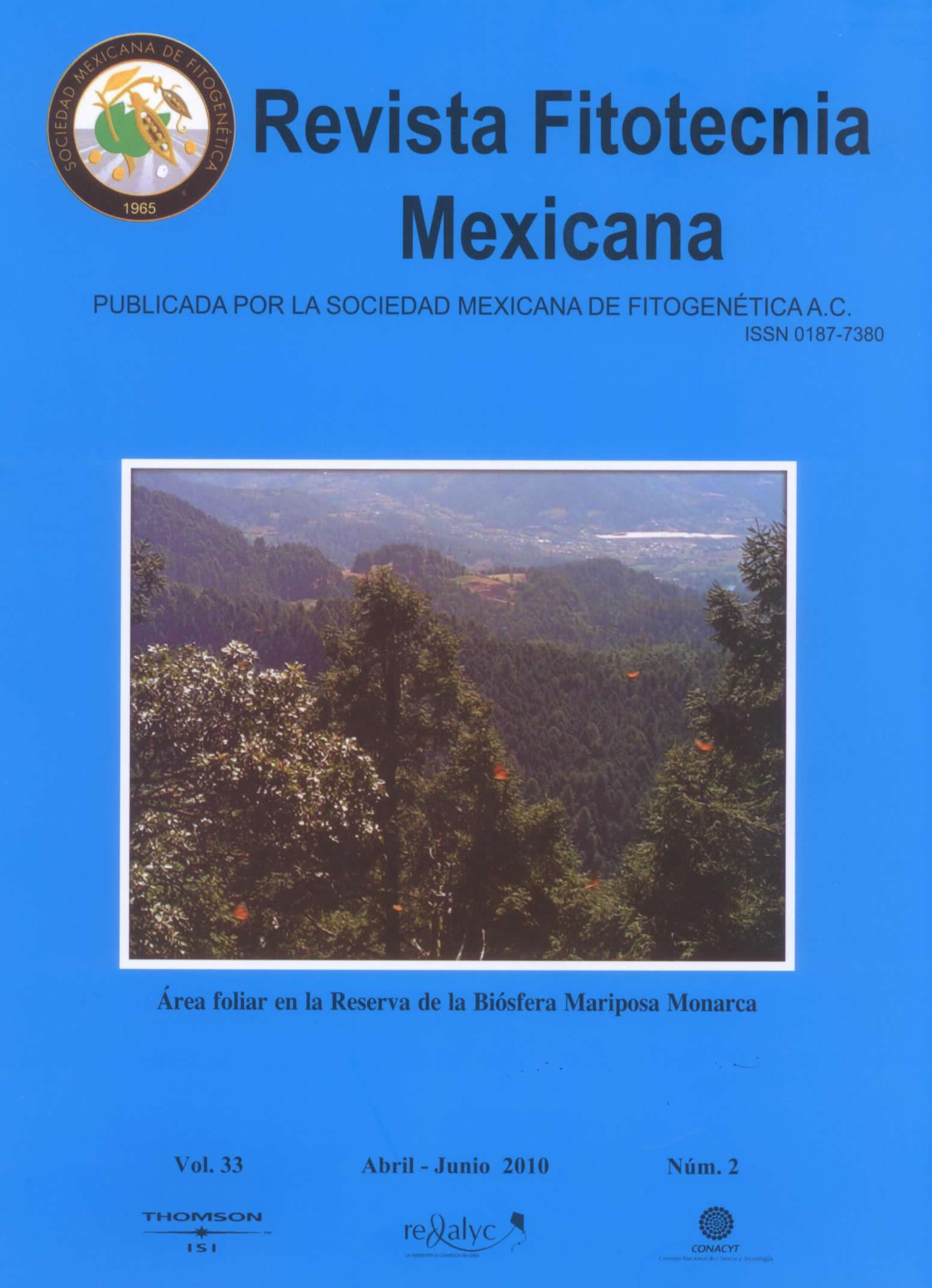HUSK TOMATO (Physalis ixocarpa Brot.) CROP EVAPOTRANSPIRATION ESTIMATED BY SOIL MATRIC POTENTIAL
Main Article Content
Abstract
Due to low water availability in some Mexican dams, as reported during the last years, and to over-exploitation of ground-water aquifers, it is necessary to design strategies for rational and efficient water use. Optimization of irrigation by calculating crop water requirements to schedule irrigation is one strategy. The objectives of this work were to determine crop coefficients (Kc) for husk tomato (Physalis ixocarpa Brot.) under two conditions, with and without plastic mulching, and to observe the effect of irrigation watering rates combined with mulching on the water matric potential at different soil depths. A linear regression model between soil matric potentials and moisture losses, as measured with a lysimeter, was generated, and this model was used to estimate crop evapotranspiration (ETc) for the growing season. Five levels of water irrigation (40, 60, 80, 100 and 120 % of reference evapotranspiration, ET0) combined with two conditions of plastic mulching (with and without) were tested. ET0 was used to estimate irrigation demand and applied by a drip tape irrigation system. Results showed that 60 % of the ET0, expressed as supplied irrigation water, keeps the soil matric water potential level near field capacity (< -30 kPa) at different soil depths, both for mulching and no mulching. During the crop reproductive phase, the soil matric potentials decreased to -80 kPa, even in plots watered with 100 % of the ET0; this result was used to estimate and adjust the formerly estimated Kc. Without plastic mulching Kc’s were 0.3, 1.1 and 0.86 for the vegetative, reproductive and maturity phases, respectively. Kc could also be estimated from leaf area index (LAI) values measured on crops growing under maximum water availability.

